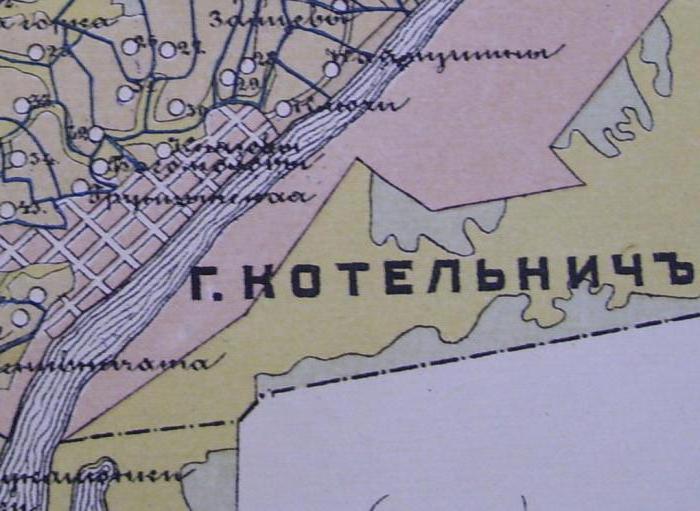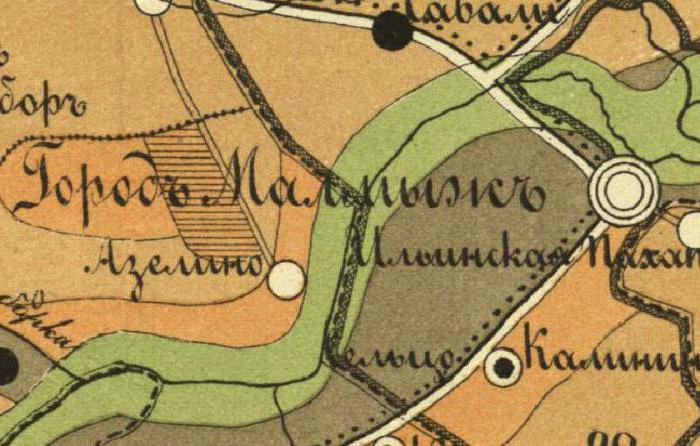Vyatka province - a territorial entity in the former Russian Empire with a center in the city of Vyatka. The lands of this region were not always included in one territorial entity, but they were always economically connected.
The formation of the territory of the province
Before the administrative reform of Peter the Great in 1708-1710, in Russia there was practically no division of the territory into regions. The great king in 1708 divided the state into 7 provinces. Note that the question of creating the Vyatka province was not at that time, therefore, the lands adjacent to the Vyatka river were included in such entities:
- Siberian province (6 counties);
- Kazan (5 counties);
- Arkhangelogorodskaya (2 volosts).
In 1719, each of these provinces was divided into provinces. The Vyatka province at that time was part of the Siberian province, but in 1727 it was transferred to the Kazan province. Such a transformation was very beneficial from an economic point of view, since the territory of the Kazan province initially included many lands on which the Vyatka River flows . As you know, at that time river transport was the main one in maintaining economic ties and developing trade.
Administrative changes took place in the empire also in the second half of the 18th century. For example, in 1780 the Vyatka governorship was created. The territory included the lands of the Vyatka province and some southern districts of the Kazan province.
Legal registration of the creation of the province
In 1796, governorship was reformatted into a province. By this action tsarism actually recognized the fact that the Vyatka province was supposed to exist initially and within economically justified borders. Administratively, the territory was divided into 13 counties:
- Vyatka;
- Oryol;
- Glazovsky;
- Sarapulsky;
- Elabuga;
- Slobodskaya;
- Kaygorodsky;
- Urzhumsky;
- Kotelnichsky;
- Tsarevosanchursky;
- Malmyzhsky;
- Yaransky;
- Nolinsky.
Center of the province
Vyatka (city) was founded by immigrants from the Novgorod lands in the interval between 1181 and 1374. In historical chronicles under 1181, the town of Kotelnich is mentioned, but nothing is said about Vyatka. But it was in 1374 that the city was mentioned in connection with the campaign of Novgorodians in the capital of the Volga Bulgars.

Vyatka is a city that has changed its name several times. It is known that immediately after the foundation it was called Khlynov, although there was no official confirmation of this fact in the form of archival documents. In 1374, according to the "Tale of the Vyatka Land", the center of this region was called Vyatka. Since 1457, the name Khlynov has returned again. In conjunction with the administrative reform of 1780, Tsarina Catherine issued a decree on the return to the city of the name Vyatka, which remained until the end of 1934. As you know, this year the communist leader Kirov was killed. The Soviet leadership decided to honor the memory of the communist, renaming Vyatka to Kirov. At the moment, the question is being raised about returning the city to its historical name, but this idea does not have serious support.
Ethnic composition
The census of the Vyatka province of 1897 made it possible to form a real idea of the ethnic structure of the region in general and of each county specifically. So, the total population of the earth was 3030831. Of this number, Russians were 77.4%, Udmurts - 12.5%, Tatars - 4.1%, Mari - 4.8%. If we consider the counties, we will see a slightly different picture. For example, in the Vyatka district, the Russian population was 99.5%. The same picture could be observed in Kotelnich, Nolinsky, Oryol counties. 54% of Russians, 42% of Udmurts, 2% of Tatars and Permian Komi lived in Glazovsky Uyezd. The most multinational - Yelabuga district. Here, at the time of the census, the population structure was as follows: 53.3% - Russians, 21.9% - Udmurts, 3.1% - Mari, 16.3% - Tatars, 3.7% - Bashkirs, 1.7% - Teppari . In the Malmyzh district, representatives of Russian nationality were about 54%, Udmurts - 24%, Mari - 4%, Tatars - 17%. As we can see, the Vyatka province is multinational, because at least 3 nationalities lived in each county. There were only a few mono-ethnic districts in 1897.

The villages of the Vyatka province
The territory of each province was divided into several administrative parts. The Vyatka province was no exception. Counties, in modern terms, are districts that include village councils (in tsarist times - volosts). The names of villages and smaller villages often played a cruel joke with the inhabitants, because people passing by could take some ugly name seriously, thinking that it really characterizes the inhabitants of the village.
Consider this situation on the example of the names of the villages of Nolinsky district. In 1926, a population census was carried out, which recorded the existence of such villages:
- Stupid (negative characteristic of the intellectual abilities of peasants);
- Doodles (even more negative expression);
- God-eaters (people eating God);
- Sores;
- Kobelevschina and Males (we are talking about some kind of sexual characteristics);
- Culture and Labor, Labor Saving (purely Soviet names);
- Netruses (depending on how to understand the meaning of the word, a positive or negative connotation is given);
- Shame (shameful place).
Vyatka province: from history to the present
Today we live in a modern country that is developing and confidently looking to the future. In the Kirov region there are many industrial enterprises. In the early 2000s, a population census was conducted , the results of which showed that the national structure of the population remained virtually unchanged. This region is notable for the fact that the Maris, Udmurts, Russians, Tatars and descendants of Perm live here interspersed. Ethnic conflicts between representatives of different nationalities have never been observed.